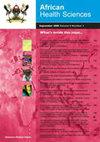服务提供难及性作为南非少女怀孕的预测因子
IF 0.9
4区 医学
Q3 MEDICINE, GENERAL & INTERNAL
引用次数: 0
摘要
背景:随着1994年南非民主的开始,人们希望能够紧急解决许多社会不平等问题。然而,研究表明,服务提供的无障碍仍然是一个挑战,调查这种不公正的社会影响仍然很重要。目的:本研究旨在确定服务提供难及性与南非青少年怀孕之间的关系。方法:利用2019年和2021年综合住户调查数据,纳入7 737名青少年女性。本研究采用描述性统计、卡方检验和多水平二元logistic回归。 结果:随机截获多水平二元logistic回归显示,青少年怀孕风险随家庭水平(无服务水平:OR= 1.73,有服务水平:OR= 1.40,有服务水平:OR=1.28)和社区水平(中等水平:OR= 1.22,高水平:OR= 1.38)的不可及性水平的增加而独立增加,p值为0.05。 结论:研究结果强调,迫切需要保证普遍提供服务,不仅是为了发展,也是为了预防青少年怀孕。此外,调查结果提供了南非青少年怀孕的结构性因素的证据,这使得大多数黑人持续处于贫困、不公正和早孕的循环之中。关键词:少女怀孕;服务无法理解;多级建模;南非;结构性的不平等;青少年。本文章由计算机程序翻译,如有差异,请以英文原文为准。
Service delivery inaccessibility as a predictor of teenage pregnancy in South Africa
Background: With the onset of the South African democracy in 1994 it was hoped that many social inequalities would beaddressed urgently. However, studies have shown that service delivery inaccessibility remains a challenge and investigating thesocial implications of such injustices remains important.
Objective: This study determined to establish the association between service delivery inaccessibility and adolescent pregnancyin South Africa.
Methods: Using data from 2019 and 2021 general household surveys, 7 737 teenage females were included. The study applieddescriptive statistics, chi-squared testing as well as multilevel binary logistic regression.
Results: Random-intercept multilevel binary logistic regression revealed that the risk of adolescent pregnancy independently increased as the level of service inaccessibility increased at household level (no services: OR=1.73, 1 service: OR=1.40, 2 services:OR=1.28) and community level (medium: OR=1.22, high: OR=1.38) at a P-value of 0.05.
Conclusion: Findings highlight the need to guarantee universal service delivery urgently not only for development, but also toprevent adolescent pregnancy. Furthermore, the findings present evidence of structural factors driving adolescent pregnancy inSouth Africa, which renders continued cycles of poverty, injustice and early pregnancy amongst the majority of Blacks.
Keywords: Teenage pregnancy; service inaccessibility; multilevel modelling; South Africa; structural inequality; teenagers.
求助全文
通过发布文献求助,成功后即可免费获取论文全文。
去求助
来源期刊

African Health Sciences
MEDICINE, GENERAL & INTERNAL-
CiteScore
2.30
自引率
0.00%
发文量
179
审稿时长
>12 weeks
期刊介绍:
The African Health Sciences is an internationally refereed journal publishing original articles on research, clinical practice, public health, policy, planning, implementation and evaluation, in the health and related sciences relevant to Africa and the tropics. Its objectives are to: Advocate for and promote the growth of reading culture in sub Saharan Africa; Provide a high quality journal in which health and policy and other researchers and practitioners in the region can and world wide, can publish their work; Promote relevant health system research and publication in the region including alternative means of health care financing, the burden of and solution of health problems in marginalized urban and rural communities amongst the displaced and others affected by conflict; Promote research and the systematic collection and collation and publication of data on diseases and conditions of equity and influence; Promote development of evidence-based policies and guidelines for clinical, public health and other practitioners. African Health Sciences acknowledges support provided by the African Health Journals Partnership Project that is funded by the US National Institutes of Health (through the National Library of Medicine and the Fogarty International Center) and facilitated by the Council of Science Editors.
 求助内容:
求助内容: 应助结果提醒方式:
应助结果提醒方式:


